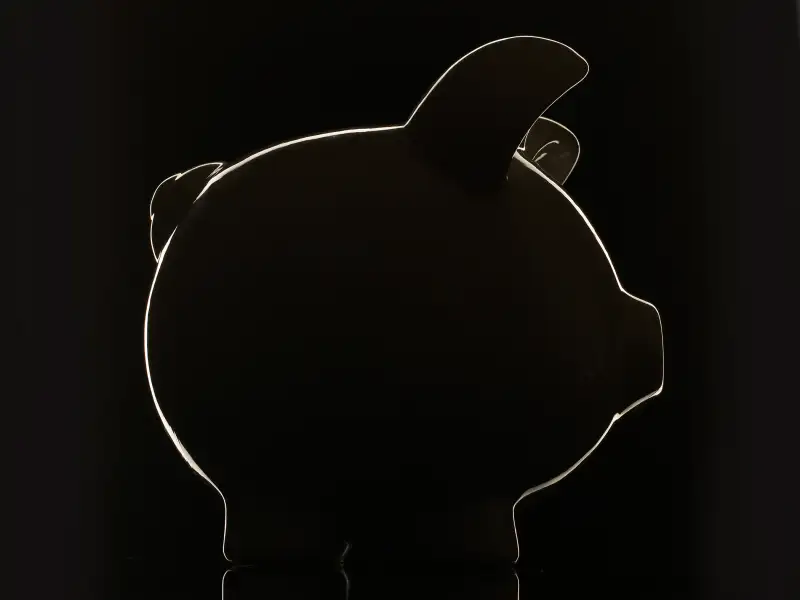3 Reasons Savers Won't Win Even Though the Fed Raised Interest Rates
Money is not a client of any investment adviser featured on this page. The information provided on this page is for educational purposes only and is not intended as investment advice. Money does not offer advisory services.

Conventional wisdom says that now that the Federal Reserve has finally raised interest rates, that this represents a long-awaited victory for long-suffering savers.
But conventional wisdom is wrong.
That's because it will take years for short-term yields to get back to the historic average of around 5%. In fact, a majority of economists surveyed recently by the Wall Street Journal believe there's a decent chance that the federal funds rate—a bellwether rate that banks charge one another on overnight loans—would be back to near zero within five years.
Here's why:
Scenario #1: The Fed errs by raising rates too soon, slamming the brakes on the weak recovery.
While the consensus view on Wall Street is that the Fed must "normalize" rates by letting them continue to rise to reflect the improving economy, some on Wall Street are worried. Jeffrey Gundlach—one of the most respected investors in the world whose bond fund has beaten 99% of its peers over the past five years—warned last week that it is "unthinkable" for the Fed to consider raising rates. He pointed out that the financial markets remain unsettled, as evidenced by the recent meltdown in low-quality junk bonds.
“We’re looking at some real carnage in the junk-bond market,” Gundlach said in a webcast. “This is a little bit disconcerting that we’re talking about raising interest rates with the credit markets in corporate credit absolutely tanking. They’re falling apart.”
What would happen if problems in the credit markets, combined with Fed rate hikes, bring growth to a halt?
Simple: The Fed would have to turn right around and start cutting rates to encourage economic activity and restore confidence to the economy. And in the past three monetary policy cycles, it has taken at least four years for short-term rates to come close to where they were before the prior set of rate cuts.
Scenario #2: The Fed gets it just right, but the economy still slips into recession.
Even if the Fed made the right decision on Wednesday, "investors should be mindful that the risk of an unexpected recession is probably higher compared to the past," says Jim Paulsen, chief investment strategist for Wells Capital Management. "This enhanced risk should be factored into portfolio strategies along with other risks like high valuations, the need to soon begin raising interest rates and an aging earnings cycle."
The fact is, this is simply an old recovery.
If you look at the long sweep of history, the typical economic expansion lasts only around three years—at least that's been the case since 1854, according to the National Bureau of Economic Research, the unofficial arbiter of when recessions take place. More recently, the average life span of an economic expansion has been just under five years since 1945, according to NBER numbers.
The current business cycle, however, is nearly seven years old. The longest expansion ever lasted a full decade, from 1991 to 2001. But even if this expansion lasts that long, the next recession is only about three years away.
To be sure, in hopes of extending this cycle, the Fed has hinted that it will raise rates gradually, lifting them by a quarter of a percentage point at most and taking a wait-and-see approach in which policymakers may pause for several months at a stretch.
That means the chances of the federal funds rate making it back to 5% by 2018 are pretty slim. But by that time, we could be looking at another recession, in which case rates would likely be slashed again and held low for several years.
Scenario #3: The Fed gets it just right, but the stock market spoils the Fed's plans.
Call it the Goldilocks scenario: The Fed makes all the right calls and keeps the economy on the right track. Alas, it's not just a recession that savers have to be on the lookout for. There's also the question of a bear market.
History shows that the average bull lasts about 4 years. This one, like the business cycle, is nearly seven years old.
And while there is a decent chance this rally survives well into 2016, its longer-term life expectancy is up in the air. UBS analyzed past rate hike cycles and found that on average, bull markets have lasted around 25 months after the first in a series of Fed rate increases.
If that average holds true this time, the market would continue rising for another two years, surviving to see its 9th birthday in 2018.
Should a bear market strike in the middle of that year, there's a good chance that the Fed would step in and cut rates to restore confidence to the financial markets, as it did in the prior four bear markets.
And under all of these scenarios, the federal funds rate and cash yields could be right back where they are now: on the floor.
